OBERHOFER: DON'T JUST FIX THE CARS ... FIX THE TRAPS!
Tue, 2010-07-20 17:00
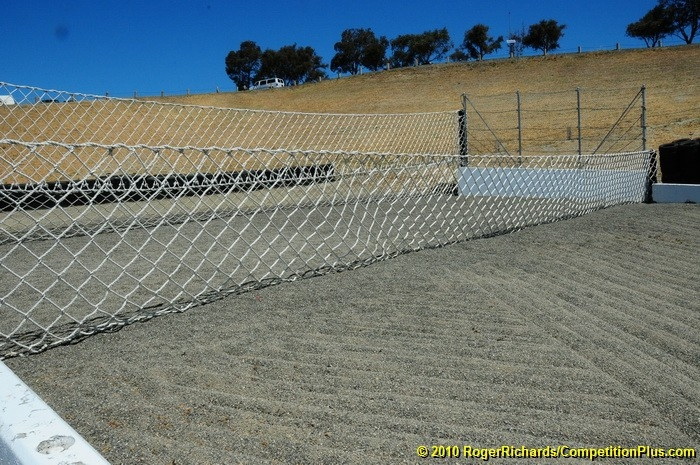 While there is no question safety is a top priority for the NHRA, veteran crew chief Jim Oberhofer believes the sanctioning body isn’t adequately protecting the drivers.
While there is no question safety is a top priority for the NHRA, veteran crew chief Jim Oberhofer believes the sanctioning body isn’t adequately protecting the drivers.“I don’t want people to think the NHRA powers-to-be are not concerned about the safety of their drivers,” said Oberhofer, who has been working with Kalitta Motorsports since 1983 and is presently the crew chief on Doug Kalitta’s Top Fuel dragster. “I know they’re not just sitting in their offices twiddling their thumbs; they do care about safety and they do stuff, they just do not do the stuff we want them to do.”
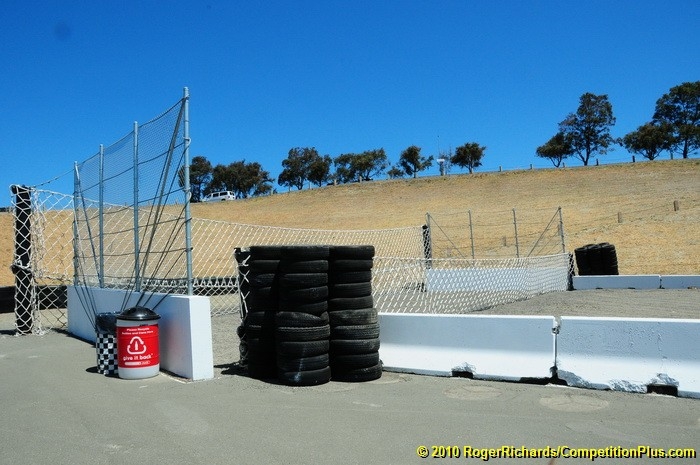
While there is no question safety is a top priority for the NHRA, veteran crew chief Jim Oberhofer believes the sanctioning body isn’t adequately protecting the drivers.
GRAHAM LIGHT DISCUSSES SAND TRAPS, NETS
 The sport of drag racing by nature is inherently dangerous.
The sport of drag racing by nature is inherently dangerous.Every time a driver takes the track, the end result could be a matter of life and death.
It was thought after the on-track death of Scott Kalitta, Connie’s son, and a two-time NHRA world champion on June 21, 2008, NHRA national event facilities would become safer in the run off area.
Unfortunately, that hasn’t been the case.
Kalitta died when his Funny Car, traveling about 300 mph, burst into flames and crashed at the end of the track during final qualifying for the Lucas Oil SuperNationals at Old Bridge Township Raceway Park in Englishtown, NJ.
In the last five weeks, the NHRA has been shaken to the core twice with the deaths of Neal Parker, a Top Alcohol Funny Car driver, and Mark Niver, a Top Alcohol Dragster driver.
Click link below to
READ THE FULL ARTICLE ...
On the Wednesday evening following the on-track death of Top Alcohol Dragster driver Mark Niver, 60, on Sunday at the Northwest Nationals in Kent, Wash., the NHRA acted quickly to amend its rulebook. Niver died when his dragster crashed into the safety net at the end of the Pacific Raceways track and it buckled the chassis into the driver cockpit.
The NHRA issued new rules governing the use of carbon fiber brakes and other devices meant to assist the driver in slowing down the race car before it gets to the nets and gravel traps, including automatic parachute deployment systems.
Oberhofer’s biggest concern right now is how inadequate some of the gravel traps and safety nets are at the NHRA’s national event tracks and is suggesting the NHRA should follow Australia’s lead when it comes to gravel traps and safety nets.
Oberhofer became familiar with the gravel traps and safety nets Down Under when he and the Kalitta Motorsports team went to Sydney, Australia to run Hillary Will’s Top Fuel dragster.
“Jim Read, who runs the track down there for them, decided after Scott’s (Kalitta’s) accident, he needed to update the sand trap at the Western Sydney (International) Dragway,” Oberhofer said. “What they have down there is a flat strap net, it’s not a rope net, and it kind of goes around poles, the strap does on each side of the wall basically. It wraps around and attaches to a bunch of old tires and weights and stuff like that, so if a car went into the net it would just start dragging the weight with it. It’s not like it is hitting something that’s a wall and it’s not like it is just going to drive through this net. It’s actually kind of like some sort of restraining system.
“When Jim told me what he did, I wasn’t quite sure what he was talking about, but once I saw it, I thought it made a lot of sense. Plus, he didn’t spend a lot of money on it. The track is government-owned down there, so he couldn’t get approval to spend a ton of money (on the safety nets), so he just went about it a different way and kind of used the ol’ racer’s ingenuity to put this thing together. I know they have had a couple of people go into the sand trap and nobody has been killed. I never personally saw anybody go into the sand trap (at Western Sydney International Dragway), but when I walked into that sand trap, it had pea gravel and they constantly till it all the time. I know when I walked into his trap, I sank more than I did at anything over here (at the NHRA national event tracks).”
Oberhofer has been looking more dilligently at the top end since the death of Scott Kalitta, 46, Connie’s son, and a two-time NHRA world champion. Kalitta died on June 21, 2008, during qualifying in Englistown, N.J., when his Funny Car, traveling about 300 mph, burst into flames and crashed at the end of the track at Old Bridge Township Raceway Park.
Kalitta died a short time after being taken to the Old Bridge Division of Raritan Bay Medical Center in Englishtown, N.J.
Since Scott’s tragic wreck, the NHRA has had both Top Fuel dragsters and Funny Cars race to 1000-feet, instead of the traditional quarter-mile (1,320 feet).
After Oberhofer’s trip to Sydney, he sent emails and pictures to the NHRA of the sand traps and safety nets they had in place at Western Sydney International Dragway.
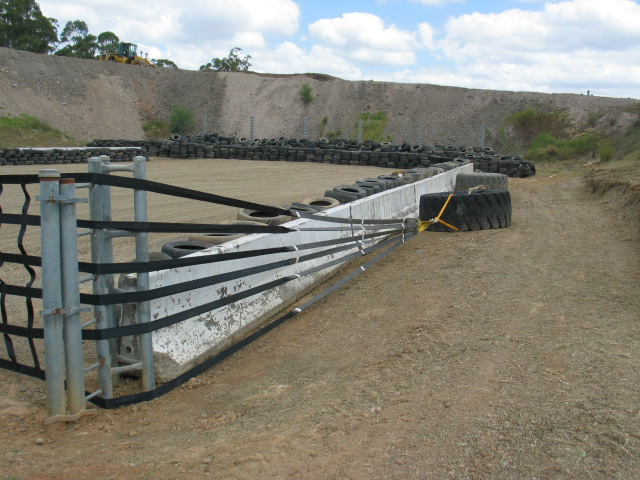
These are photos of the catch net system device employed in Australia. Whether it works better than the system in the United States remains to be seen, but Jim Oberhofer believes its worth a try.
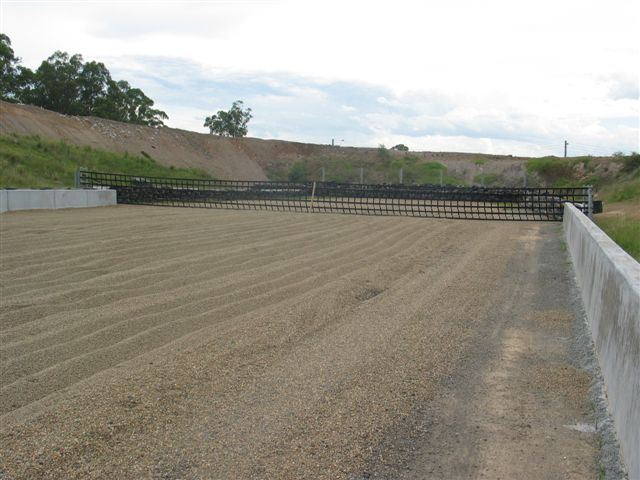

“In my opinion, I’m not saying something like this would save people’s lives, but I can tell you right now, I think it’s a much better deal than what we have (in the NHRA) right now,” Oberhofer said. “What we have right now is not right. I do not care what those guys at NHRA think or say. I do not have the answer, and I’m not claiming I have the answer and I’m not claiming what Jim Read has is the be-all end-all. I tell you what though, if I had a race car and I was going into a sand trap, I would rather go into the sand trap at Western Sydney International Dragway than any other place we have here (in the NHRA) on tour. The sand trap they have over there just seems like a better way of protecting the driver and the car.”
Oberhofer says implementing the same type of gravel traps and safety nets they have at Western Sydney International Dragway at the NHRA national event tracks is very doable.
“I don’t know where Jim (Read) had his safety nets built, they were made somewhere over in Australia,” Oberhofer said. “But, Bob Shroud, over here (in the United States), who makes all the parachutes and everything, he can make all that. Bob told us before he ever knew what Jim Read did, he (Shroud) said it ought to be a flat straight up net and he was saying the same thing basically Jim Read was saying. If the car hits the first net, it is designed to slow them down.”
Oberhofer also said following Scott Kalitta’s accident, he and his brother Jon Oberhofer, who is a crew chief with the Kalitta Motorsports Funny Car driven by Jeff Arend, and Nick Boninfante, who also is a crew chief for Arend, and Chad Head, the director of racing operations for the Al-Anabi Racing team, inspect the end of every race track they compete at on the NHRA national circuit.
“We inspected the net at Seattle (at Pacific Raceways) (last) Thursday,” Jim said. “At Seattle, we all said this net is too tight. We thought this track is a little bit longer, and we shouldn’t have problems here, but obviously we were wrong. We look at every one of these race tracks and sand traps and stuff because that’s what got Scott. We’re very passionate and very emotional about these sand traps, that they are right.”
Graham Light, the NHRA’s senior vice president-racing operations, this past Wednesday addressed NHRA’s safety nets with Competition Plus.
“That style of net has been successfully used for many, many years at race tracks,” Light said. “The net is the same construction, same manufacturer as all the nets at all the other tracks we run at. Some are taller than others, but the construction of it is the same. It is a net over the course of time that has saved many, many drivers. Obviously when you run into the net at a high rate of speed, you’re going to damage the race car. The problem that you have with our sport is no two vehicles are alike. You have motorcycles, you have heavy cars, you have light cars, long cars, and short cars. So to design a trap that accommodates all the different configurations (of cars) is a big challenge. What we have, we feel has adequately worked for many, many years.”
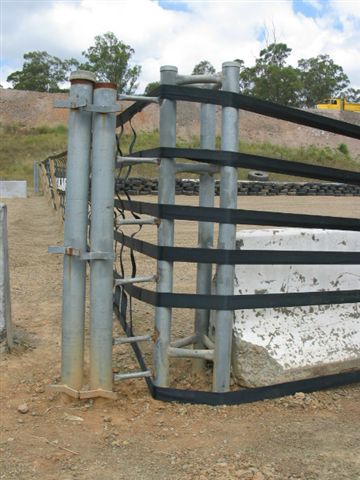
Oberhofer says implementing the same type of gravel traps and safety nets they have at Western Sydney International Dragway at the NHRA national event tracks is very doable.
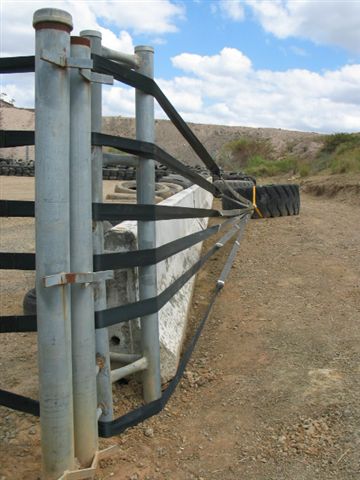

“I don’t think that (the wheel base of the dragsters) has made those safety nets ineffective,” said Hadman, who has been a chassis builder for 38 years. “The whole issue is speed. That’s been NHRA’s deal to slow the cars down and here’s a car (Niver’s) that went into the gravel at 70 mph. He wasn’t going that fast and it killed the guy. I just think how they (NHRA) critique things with panels, maybe they need to get a safety panel and critique their tracks. Have them (the tracks) critiqued in an unbiased manner, where nobody has (anything) to gain and nothing to lose. Get us some ideas here. We’re at a crossroad and it is time to do something.”
Back in June of 2009 at Englishtown (N.J.), Top Alcohol Funny Car driver Alexis DeJoria deployed her safety parachutes. Instead of slowing her down, they ripped right off the back of the car, and set DeJoria speeding towards the safety nets at the end of the track. DeJoria was unhurt in the wreck.
Marty Nothstein, another Top Alcohol Funny Car driver, went into the sand traps and safety nets when his parachutes didn’t come out during a second round race against Tony Bartone at the same event in Englishtown. Nothstein also was not injured.
“After Englishtown when Alexis DeJoria and Marty Nothstein went through there (the nets), the people at NHRA and the people at Englishtown thought maybe they did something right here, but there is still a lot to be learned off of that because the nets really didn’t work properly and Alexis got very lucky,” Jim said. “That sand trap there (at Englistown), in my opinion, is not right. It’s not long enough and there is not enough distance between the first net and the second net, and it’s just not long enough and they really need to change that. I do not know how many times I’ve been told by them (NHRA) that the University of Nebraska has looked at or approved the sand trap at these facilities. I want to see these approvals. I want to know that these people from the University Nebraska have been to everyone of the facilities we race at. Were they at Seattle before that race and did they approve that sand trap and that net and everything like that? I doubt it.”
According Jim Oberhofer, the sand trap at Bristol (Tenn.) Dragway is worse than Englishtown.
“The sand trap at Bristol is horrifying,” Jim said. “It’s almost exactly like what Englishtown’s was when Scott was killed, except the wall goes the other way. If a driver in the left-hand lane got into that sand trap, there is a good chance they could get up on top of that left wall and go over the wall. It’s not right. Once again, it (Bristol) is a long race track, and it goes up hill. Can something that happened to Scott Kalitta happen at Bristol? Absolutely it could. It would take a perfect storm for all that to happen, and I just look at that sand trap at Bristol and it is not right. There’s something that needs to be done. They need to straighten that sand trap out or you take the track and you kind of curve it around because behind the sand trap there seems like there is another quarter-mile they could pave.”
Jim Oberhofer says the sand trap at Texas Motorplex in Ennis, Texas, is his least favorite.
“I really don’t like the sand trap at Texas Motorplex,” Jim said. “When Billy Meyer built that sand trap and they made it real long, it was good. It’s a very long sand trap, and the idea behind it was good. The only problem I have with it is the material that it has in it. We went there a couple of years ago and we took our golf cart and drove into the thing. We drove all the way to the (safety) net with our golf cart and we never sank. The material that is in there is not right and then there is a wall (in there) that they kind of have falling down, and there are some very short curves on there, and somebody could hit the wall pretty easy. I think that it could be fixed, if they will fix it, but I do not know. Billy (Meyer) believes what he did is right, and I’m not saying it is right or wrong or whatever. Me personally, I do not like it.”
Jim Oberhofer also believes the NHRA isn’t entirely at fault for the safety nets and sand traps they have.
“The drivers and the owners are just as much to blame for what goes on because everybody is afraid to stand up and say something, and do something,” Oberhofer said. “Perfect example was in Sonoma in 2008, which was after Scott’s accident. We go up there for our first qualifying session, the groove (of the race track) was fine, but outside of the groove there was some sort of reaction with the glue that was put down. It was really sliding. They actually started running cars and I’m sitting here and myself and John Medlen were going, ‘this is wrong.’ Somebody gets outside of the groove it is going to be like hitting an oil slick. Yet, cars kept running and nobody listened, and it was frustrating. I finally went and got Bob Vandergriff Jr. and said Bob you got to stop this. Luckily, Mike Neff, I think it was, oiled the track down, and they had to go clean the track up and I went and got Bob and I went and got Connie Kalitta and I said this is screwed up. I actually pulled Hillary Will’s car (Top Fuel dragster) out of the qualifying line because I wasn’t going to run it with the track that way. Afterwards, they got the track fixed and it was a lot better once the sun went down and the track cooled off.”
The safety of NHRA drivers wa thrust to the forefront after Eric Medlen, John’s son, died March 23, 2007, as a result of injuries he suffered when he crashed during a test session at Gainesville Raceway in Florida.
Medlen died when his Funny Car had a tire failure that led to tire shake and the most violent vibrations ever recorded in a dragster cockpit. Medlen's head slammed repeatedly into the roll bars, causing fatal trauma.
After the opening qualifying session at Sonoma in 2008 was completed, Jim Oberhofer was miffed about what he heard from some of the drivers.
“I asked John Force afterwards, I told him he shouldn’t run his car on something like this,” Oberhofer said. “For Christ’s sake, his daughter (Ashley) drives, his son-in-law (Robert Hight) drives and Mike (Neff) drives and he (John Force) told me ‘I hear what you’re saying, but I have sponsors and stuff. I was like are you (expletive) kidding me? It goes back to the fact that drivers, owners and crew chiefs, they have to step up. If something is not right, they should not run their cars, but everybody out here is so freaking scared. If it is a hired driver, they do not want to piss the owner off. If it’s an owner, it is about pissing their sponsors off. It’s like come on, you have to stand up for what you believe in and for me that (the first round of qualifying at Sonoma in 2008) was one of the most frustrating days I’ve had. I was saying this thing is screwed up, but yet we’re still going to go out there and run our race cars down this track and the track is screwed up. The same goes for these race tracks when these sand traps aren’t right. When things aren’t right, you have to step up and say this sh** is not right, and we’re not going to run. If you get called a crybaby or whatever because you’re just trying to be safe about something, then oh well. My opinion is you’re better to be safe than sorry. We get our butts chewed by NHRA for blowing engines up or doing something like that, but yet when we go and say something that the race track is not right, we get bitched at.”
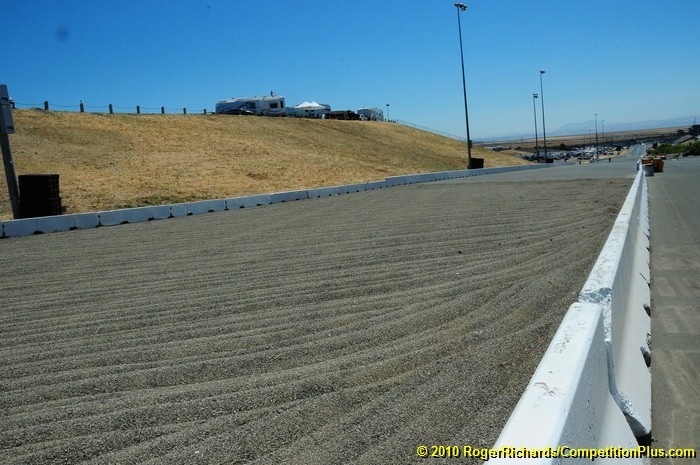
The sand trap at Infineon Raceway, the most recent stop on the NHRA Full Throttle Series.
Jim Oberhofer also isn’t making any apologies for his stance on safety.
“I lost one my best friends in the world (in Scott Kalitta), a guy who was like a big brother to me because of a (expletive) race track,” Oberhofer said. “If people want to say I’m too emotional about this or whatever, so be-it. I do not want to see anybody else get killed. Unfortunately in the last month we have lost two drivers (Mark Niver at Seattle and Neal Parker at Englishtown), and that’s just unacceptable. This is something that needs to be addressed. The sanctioning body, the track owners, everybody just needs to get off their asses and pull their heads out of the sand. We need to realize that what we have got here is not working and if we need to make a change, then let’s make a change. The lines of communication have to be there. Things have to get better. It’s going to take everybody’s part, the sanctioning body, track owners, drivers, owners, crew chiefs, everybody to make all this work.”
Categories:




































